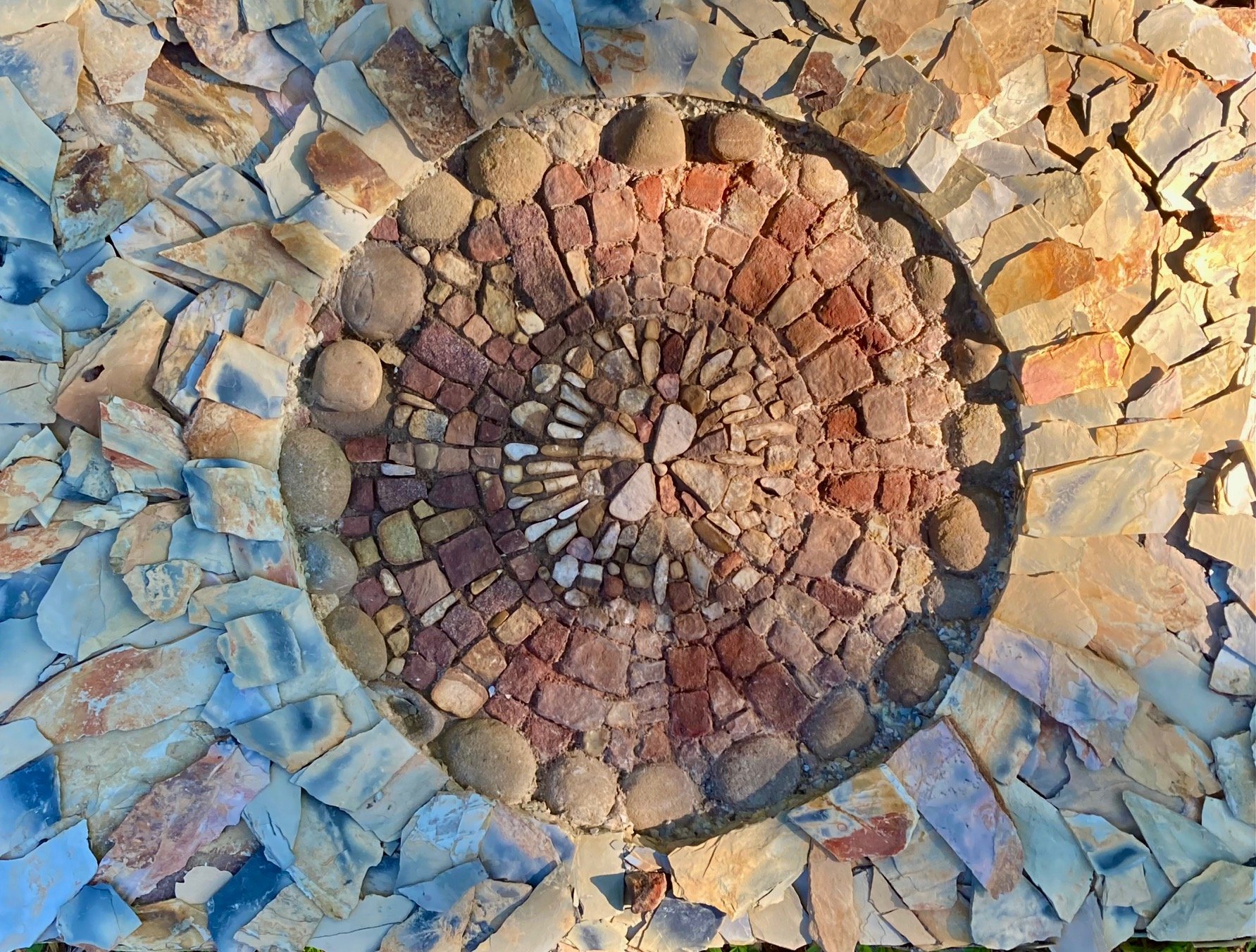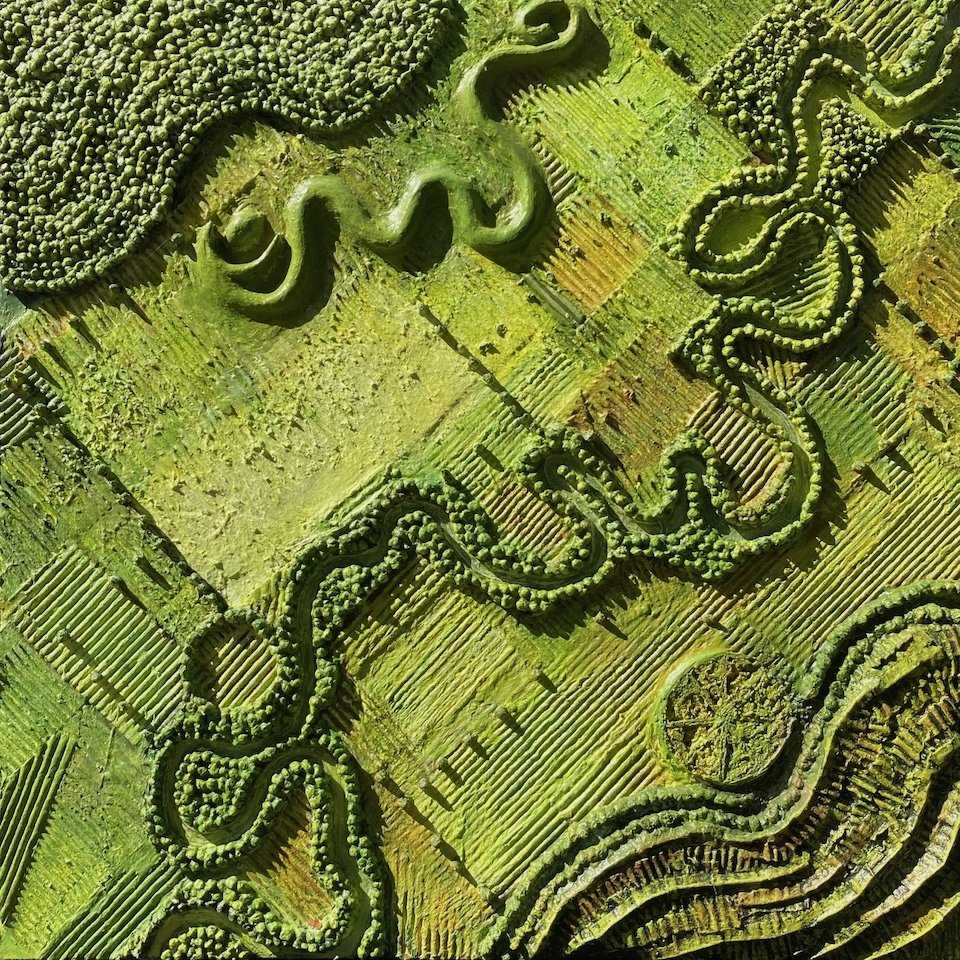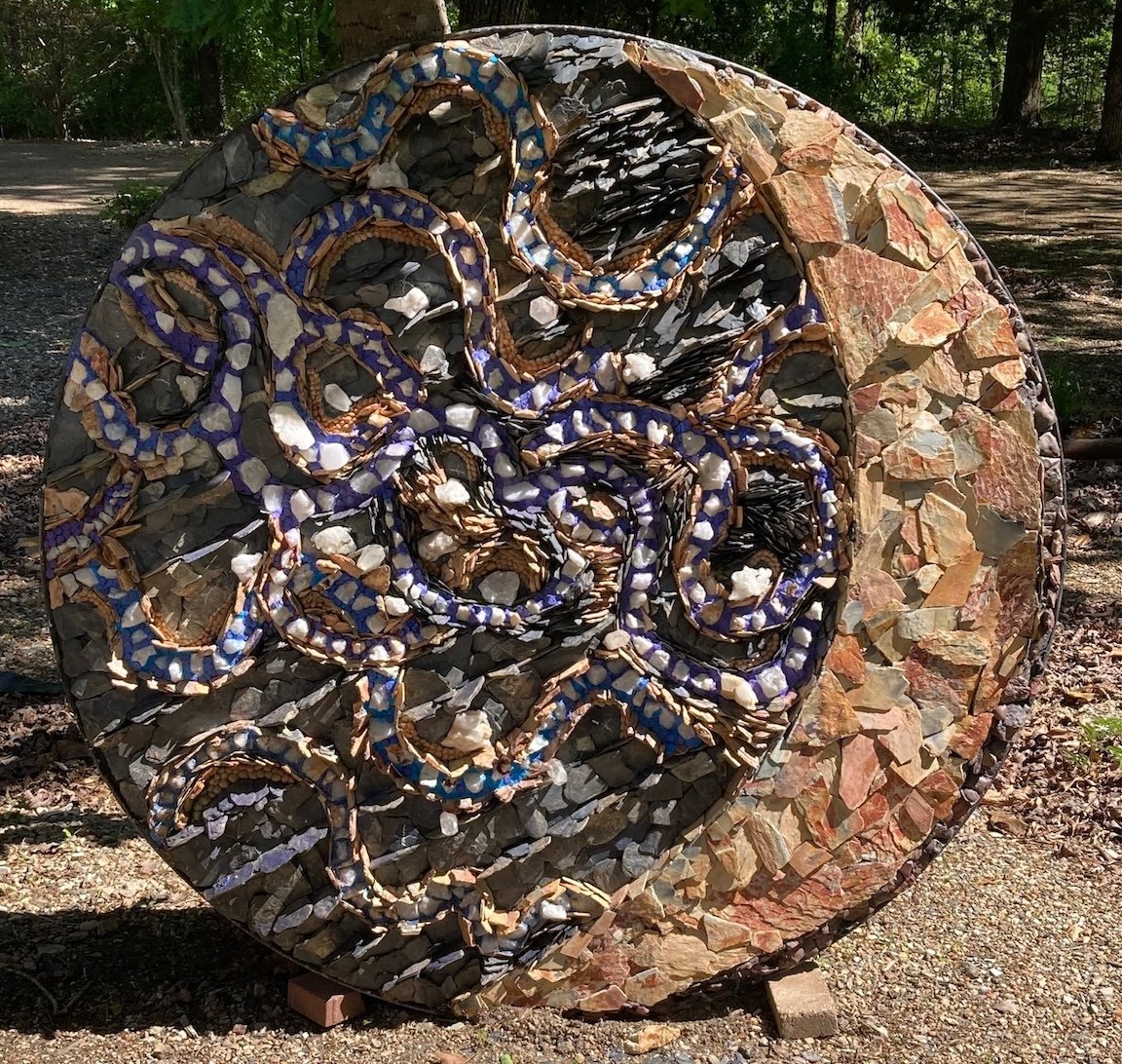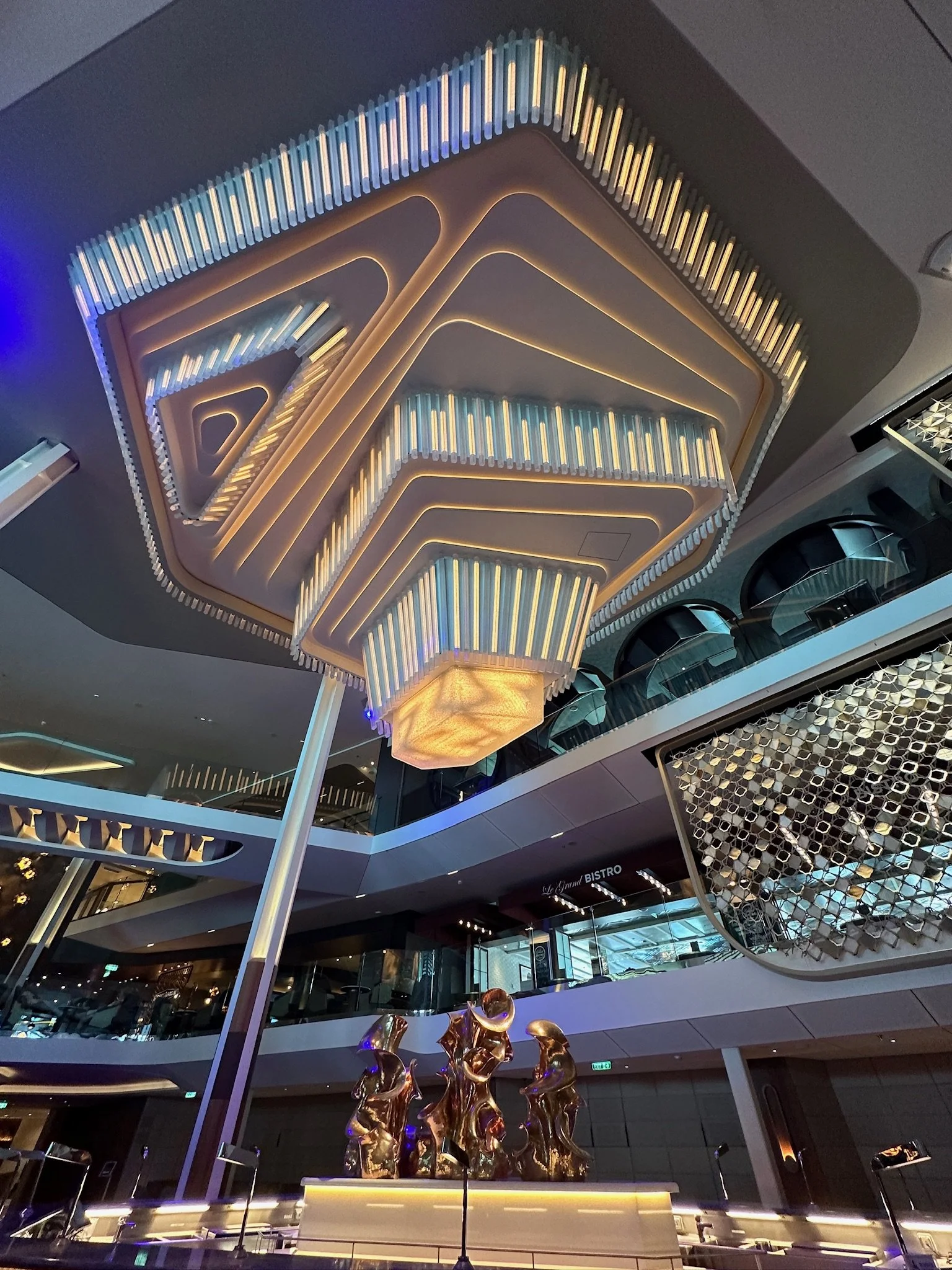Interview with artist Frank Goff
Frank Goff is a Hot Springs artist working in many different mediums. After earning degrees in art and education from Arkansas Tech University and the University of Central Arkansas, Frank and his wife Patricia taught in public and private schools in the U.S., Costa Rica, and The People’s Republic of China. When they retired from teaching, they relocated to Hot Springs Village, where Frank works as a full-time professional artist. More of Frank’s work can be found at his website frankgoffsart.com.

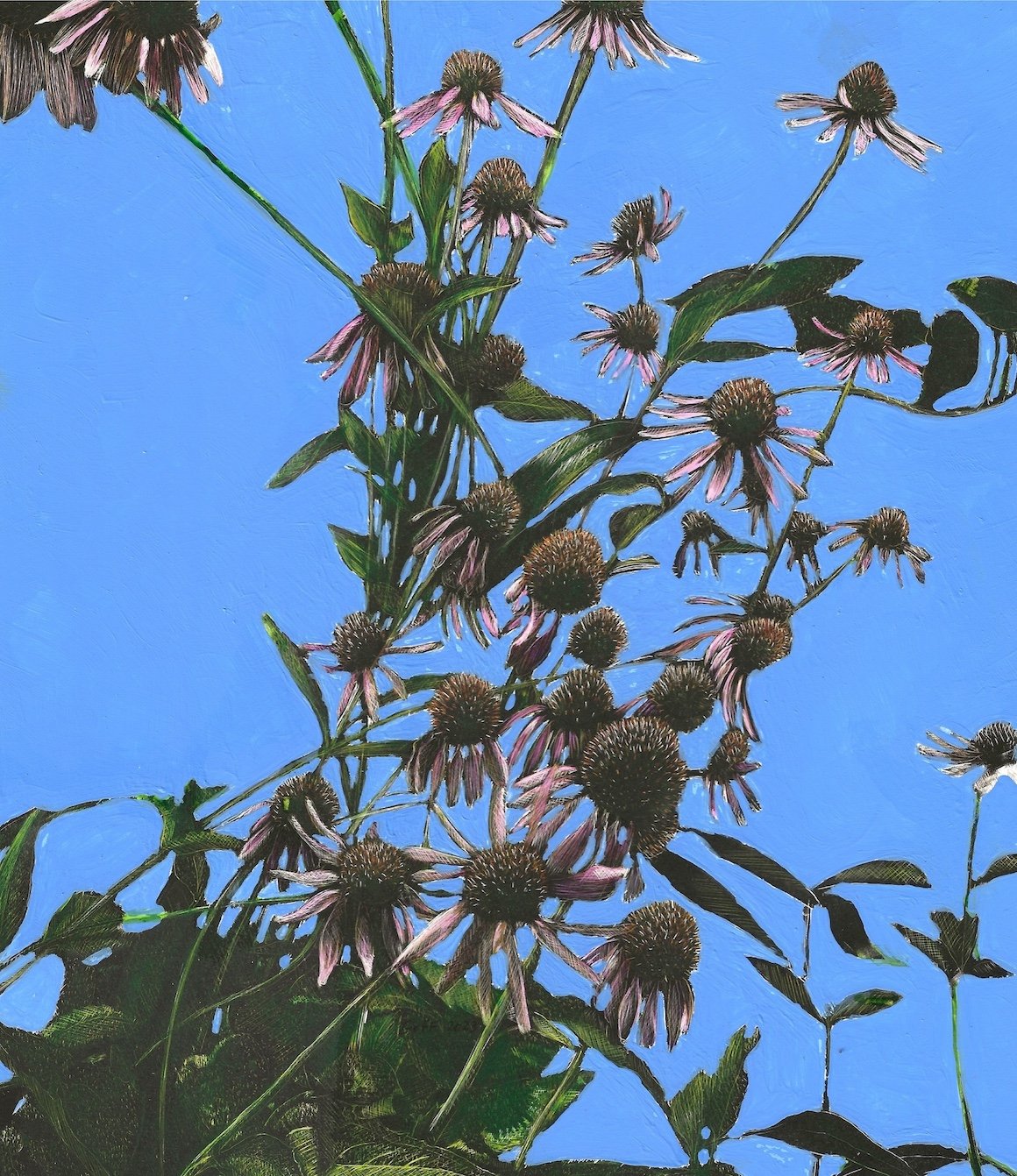

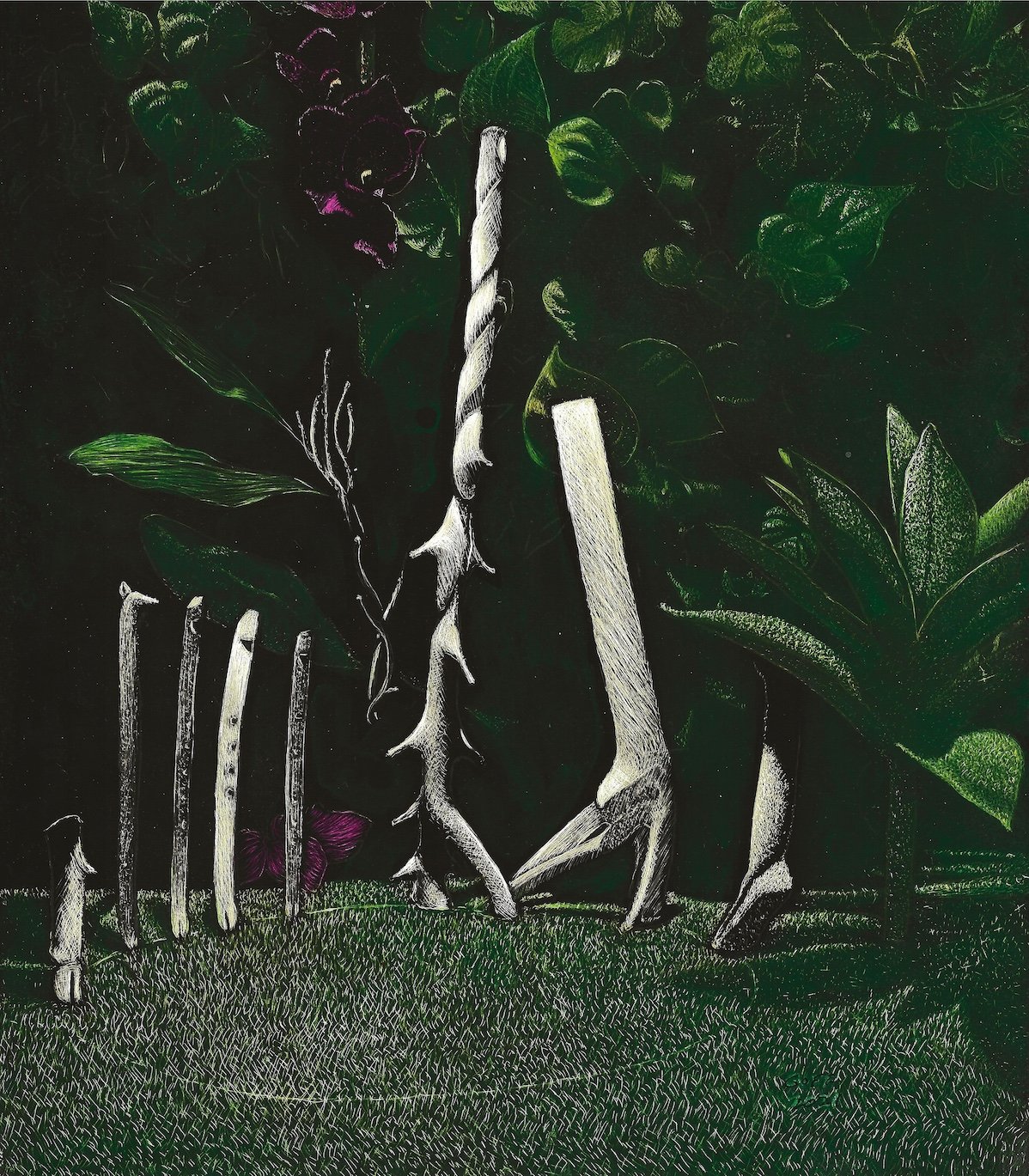

AAS: Frank, did you grow up in Arkansas?
FG: I was born into a military family with roots in Arkansas. I attended elementary schools in Texas and Germany and completed high school in Russellville. I attended Memphis College of Art and completed a B.A. in Art from Arkansas Tech University and a Master of Science in education degree from the University of Central Arkansas. From 1985-1991, my wife and I attended the Spanish Language Institute in San José, Costa Rica, taught in private schools and were involved in Nicaraguan refugee relief projects. We were both career public school teachers in Arkansas, Texas, and the Carolinas. We also had the opportunity to teach English as a Second Language in Costa Rica and The People’s Republic of China. We taught in the Charlotte, North Carolina area for the final 15 years of our teaching careers, then retired. We moved to Hot Springs Village. Arkansas in 2019 to be closer to family.
AAS: Were you creative even as a kid?
FG: My parents encouraged my natural inclination to draw and I had the good fortune to be exposed to a culture where the visual arts are celebrated. Travel was the biggest influence on my development as an artist. My dad was stationed in Germany for six years during my elementary school years. We lived in the Bavarian Alps region of southern Germany, an area of great natural beauty. We frequently went on outings to see the countryside and tourist attractions. My family visited the beautiful town of Oberammergau, in the Bavarian Alps. Oberammergau is known for its wood carving tradition. Carvers lived and worked in the back of the building. Up front, storefronts faced the street. As we entered a woodcarver’s storefront, I was overwhelmed by the sights and sounds of dozens of cuckoo clocks going off, mechanical wooden toys moving about, and shelves crammed to the ceiling with religious carvings, painted walking sticks, snow globes and tourist trinkets. It was a wondrous experience.
AAS: Do you think your experiences with students affected your art practice then and now?
FG: My wife and I have taught in a variety of education settings: rural schools, inner city and suburban public schools, private schools and as I mentioned, taught English in Costa Rica and China. My art practice has been positively influenced by my teaching experiences. Travel and cross-cultural communication with students from different cultures have helped me to be aware of different ways of seeing things. As a result, maybe I am more open to exploring alternative ways to problem solve and try out different mediums.
AAS: I want to begin by asking you about one of your sculptural pieces, Fisk’s Bend. What was the inspiration for that piece?
Fisk’s Bend, 36” x 36” sculpture on canvas, recycled cardboard, dried seeds, aluminum foil, acrylic paint
FG: Air travel provides another way to look at a landscape. Flying into the Little Rock airport, you pass over natural features, like rivers and cypress swamps, and man-made patterns in the landscape created by agriculture. Rice fields in particular are interesting. In certain stages of the year, they look like drawings in the landscape. A rice farmer explained to me the fact that the wiggly lines are created by a “levee plow”. The rice field is surveyed, then plowed to maintain a consistent height for the levee and not in straight rows. That accounts for the dark, wiggly lines seen from the aircraft.
Fisk’s Bend is a tribute to Harold Fisk. Fisk was a geologist and cartographer working with the US Army Corps of Engineers in 1944. Fisk mapped the lower Mississippi River’s “Meander Belt”. The meander belt is the shifting channel of the river within the river valley over time. Fisk used overlapping colors to represent the river’s many shifts within this belt. Fisk relied on old maps, aerial photography, and geological study to visualize and compress the river’s long history into a single image. Fisk’s maps are the starting point for my current series of wall sculptures of an imaginary aerial landscape. My primary interest in this series is to capture dynamic flowing movement. I am also intrigued by the juxtaposition of ancient geological features, the textures and patterns of present-day agricultural fields, and the archeological evidence of Native American civilizations, all in the same landscape.
AAS: Another of your abstract interpretations of an aerial landscape view is Serpentine Movement. Here you used stone. Tell me about it.
Serpentine Movement, 38” x 30", Ouachita minerals and travertine marble mounted on expanded metal
FG: Serpentine Movement is an outdoor wall sculpture using local shale, quartz, crystals, and other minerals to represent an imaginary aerial landscape. The butterfly forms were made using fiberglass sheetrock tape, epoxy paste and acrylic paint. White quartz was used to make the coiling pattern of the river, suggesting the movement of a serpent. Rectangular pieces of reddish orange shale suggest fields bordered by green hedgerows and woods.
AAS: The Cloud Hotel is a completely different sculpture made from recycled/reclaimed materials. Where did the imagery for it come from?
FG: The Cloud Hotel project evolved over time. The initial impulse was fueled by Covid isolation and a garage full of empty moving boxes that needed to be dealt with. I had the motive, the means, and the opportunity to make something. The theme of social isolation was on my mind. I love working with cardboard, I call it the gateway drug to the 3D world. It is cheap and available everywhere. Cardboard is an environmentally friendly material and easily recycled. I use it all the time for maquettes, exploring ideas for projects, building forms for assemblages and as the final surface for wall sculptures. The Cloud Hotel is an example of cardboard art.
Driving home from a trip to Hot Springs, I came up with the idea of abandoned, empty, habitations, like the old buildings along Highway 7. I started with a sheet of 1” polystyrene glued to a hardboard base. The 36” x 36” panel was subdivided into rooms projecting out from the surface. Porches, windows, curtains, and roof tiles were made of cardboard and paper products. Empty architectural spaces were cut out down to the hardboard base to add to the sense of depth. The structure was painted white on a brilliant blue background. The first edition of The Cloud Hotel hung on the studio wall for several years.
Eventually, I made associations between the empty collection of rooms with cells of beehives and the purple martin bird houses you see in rural landscapes. I thought it might be interesting to try to capture the dynamic movement you see in bird and insect swarms. Butterfly forms were cut out of sheetrock tape, painted white and attached to wire, forming stringers of insects emerging from the empty rooms. The undulating cloud form was made with laminated cardboard and painted white. Direct lighting on the all-white architectural and insect forms creates interesting light and dark patterns and gives a lively sense of movement. Thus, the forlorn, first edition of The Cloud Hotel, was transformed.
The Cloud Hotel, 36” x 36” x 6" wall sculpture, recycled cardboard, fiberglass tape, wire, mounted on masonite hardboard
“I have always enjoyed carefully observing and drawing from nature. I have found that small things are often the most interesting subjects.”
AAS: Now for something completely different - your engravings, which are extraordinary. Bone Study is a very academic-looking drawing. Is there a story behind it? And tell me about scratchboard engraving and its history.
Bone Study, 7” x 5" scratchboard engraving
FG: I have a collection of bones and other interesting finds in the studio. Bone Study was made using scratchboard, which was used by illustrators in the print industry before the use of photography in the 1950’s. Medical and scientific publications were also illustrated using the scratchboard technique. The scratchboard I use is made by Ampersand in Austin, Texas. Three layers of materials are used in production. First, Masonite hardboard is covered in white kaolin clay. Black India ink is then sprayed over the white clay.
The artist draws directly on the black surface using a sharp cutting tool to cut through the thin layer of black ink into the underlying white clay. I use an Exacto knife. The marks that can be made are just like traditional black pen and ink drawing. You can make patterns of lines, dots and hatch marks to create light to dark effects. Technically, since you are cutting into the scratchboard, it is an engraving. The scratchboard engraving is made of white marks on a black surface, rather than traditional black marks on white paper. The difference to me is that that line you can make with a razor thin drawing tool on scratchboard can be much finer than any pen and ink materials. Very fine detail is possible using this technique. The final illustration can then be colored using acrylic ink, if so desired.
AAS: Serviceberry and Microgreen Forest are two scratchboard engravings that I really love. They are not just skillfully done, they are beautifully interpreted. Tell me about them and why you wanted to capture them?
FG: Amelanchier canadensis, an early spring flowering tree, is called serviceberry here in Central Arkansas. It is one of the first flowers to be seen after winter. In the past, before paved roads and automobiles, it was a sign of Spring and better travel conditions for horseback riders and wagons. Local folklore says traveling preachers would begin to ride their circuit and perform religious services to remote settlers when the serviceberry bloomed.
Serviceberry is one in a series of botanical illustrations using the medium of scratchboard. I chose serviceberry as a subject because it is well suited for scratchboard. The white blossoms contrast with the black India ink background and the petal forms translate well using flowing lines to create their shapes. Color was added with acrylic ink washes.
Microgreen Forest was inspired by my wife’s collection of seedlings. I took a picture of a tray of sprouts from below, looking up. The upward perspective gave the sense of walking into a forest of towering microgreens. After completing the engraving, I sanded off the black India ink in the negative spaces, then painted the negative space with blue acrylic paint. The remainder of the engraving was tinted using acrylic ink washes. I use this mixed media technique in most of my current scratchboard engravings.
Serviceberry, 10” x 8” scratchboard engraving tinted with acrylic ink
Microgreens, 8” x 10”, scratchboard engraving tinted with acrylic ink
AAS: I admire that you work in so many different mediums. I won’t ask you which is your favorite medium, but which is the most fun to work in or which gives you the most gratification after you complete a work?
FG: I use different mediums for different purposes. In 2014, my wife suggested that I create a series of botanicals to reach a wider audience. I discovered scratchboard to be an ideal medium when it is important to closely observe something, capture fine detail and get professional results. It requires intense focus and mistakes are not easy to correct. Careful preparation is required. My eyes and hands wear out after a few hours, so I work in two-hour sessions. It is tight, tedious work. However, the final result can be very satisfying.
Rollin’ and Tumblin’, 5’ diameter, Arkansas minerals mounted on expanded metal
I enjoy working with local stone and minerals to create large assemblage projects. Over time I have made a series of 5’ diameter wall sculptures based on the theme of the flowing movement of water. One of those sculptures, Rollin’ and Tumblin’, was recently installed in The Woodland Auditorium sculpture park here in Hot Springs Village. All of the works in this series are made of durable materials that can be displayed outdoors. It is satisfying to know that they will be around for a long time.
Alabaster Pie, 4”w x 6”l x 3”h, alabaster
I also enjoy working with alabaster, a soft stone easily carved with hand tools. Alabaster Pie is an example. I found a triangular shaped piece of alabaster that suggested a pie wedge and went from there. I have a large collection of carvings in various stages of completion around the studio. I also use three dimensional constructions as subjects for paintings. The constructions combine wooden sculptures that I have made, found objects, scenery, and theatrical lighting to create an arrangement, like the stage settings in a theater. The observer is invited to enter the tableau and create their own narrative for the scene.
AAS: Some of your more recent works are in wood. Is wood carving something new for you?
Untitled (work in progress), 30” x 10” x 5”, maple wood carvings
FG: I enjoy direct carving in wood when I need to relax. It is about the process and not necessarily about the final result. I started carving on my days off during my teaching career for stress relief. Direct carving in wood is an intuitive process. You don’t have a plan. You collaborate with the material to figure out how to proceed. You look for shapes and patterns in the wood, then exploit the opening and attack with sandpaper and carving tools. I work outside due to the dust and debris and enjoy long hours of playing with wood. Some of the wood pieces I work on may be displayed in public, but that’s not why I carve. The process of carving is an end in itself. It is a pleasurable, meditative experience. Occasionally I might end up with something that I would like to share with others.
AAS: It seems that you derive a lot of inspiration from the beauty and complexity of nature. Has that always been the case?
FG: I have always enjoyed carefully observing and drawing from nature. I have found that small things are often the most interesting subjects. Many of my sketchbook journals and scratchboard engravings in my current series are based on straight-forward studies of natural forms.
AAS: Frank, what can we expect next from you?
FG: As the years go by and the clock runs out, I take heart from the example of the great Japanese artist Hokusai. “From the age of six I had a mania for drawing the shapes of things. When I was fifty, I had published a universe of designs. But all I have done before the age of seventy is not worth bothering with. At seventy-five I'll have learned something of the pattern of nature, of animals, of plants, of trees, birds, fish, and insects. When I am eighty you will see real progress. At ninety I shall have cut my way deeply into the mystery of life itself. At one hundred, I shall be a marvelous artist. At 110, everything I create; a dot, a line, will jump to life as never before. To all of you who are going to live as long as I do, I promise to keep my word. I am writing this in my old age. I used to call myself Hokusai, but today I sign myself The Old Man Mad About Drawing." I am thankful for my family’s support and the wonderful teachers I have had along the way.
